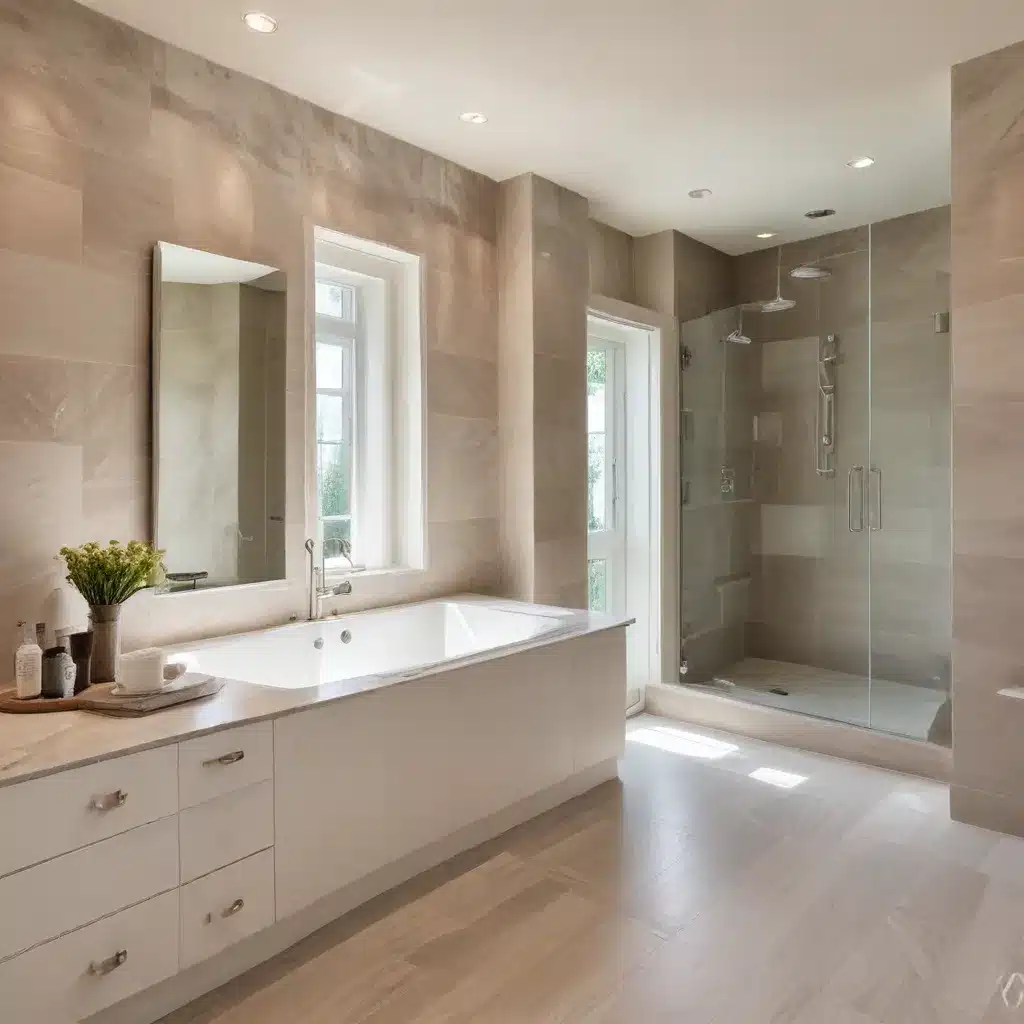As an experienced home improvement consultant, I’ve seen firsthand how a home’s design can profoundly impact our health and well-being. In today’s fast-paced world, more and more homeowners are recognizing the vital link between their living spaces and overall wellness. Whether you’re planning a full-scale renovation or simply looking to make targeted improvements, incorporating wellness-focused elements can transform your house into a true sanctuary for healthy living.
Wellness-Focused Design Considerations
Spatial Planning for Wellbeing
When it comes to wellness design, thoughtful space planning is key. By strategically arranging your home’s layout, you can create an environment that naturally encourages healthy habits and supports your desired lifestyle. For example, positioning exercise equipment or a dedicated yoga/meditation area near natural light and views of nature can inspire regular fitness routines. Likewise, locating the kitchen, dining, and living areas in close proximity fosters togetherness and shared mealtimes – an important aspect of nurturing physical and emotional wellbeing.
Incorporating Wellness-Enhancing Features
Beyond the overall floorplan, specific design choices can have a significant impact on your health and happiness. Smart home technology, such as voice-controlled climate systems and lighting, can help regulate temperature, humidity, and illumination for optimal indoor environmental quality. Touchless faucets and self-cleaning toilets minimize the spread of germs, while high-performance ventilation ensures fresh, filtered air throughout your home.
Optimizing Indoor Environmental Quality
One of the foundational elements of wellness-focused design is ensuring exceptional indoor air quality and water purity. Upgrading to low-VOC paints, formaldehyde-free cabinetry, and energy-efficient windows can dramatically reduce exposure to harmful toxins. Incorporating air purifiers, dehumidifiers, and whole-home water filtration systems further safeguard your family’s health.
Remodeling Strategies for Healthier Living
Identifying Lifestyle Needs
When embarking on a wellness-oriented renovation, it’s crucial to first understand your unique lifestyle needs and priorities. Do you have young children who require safe, family-friendly spaces? Are you an avid cook interested in a high-performance kitchen tailored for healthy meal preparation? Or perhaps you’re seeking restorative bathrooms with spa-like features to help you unwind. Clearly defining your goals upfront will guide the design process and ensure the final result aligns with your vision for healthier living.
Prioritizing Health-Conscious Renovations
Once you’ve identified your wellness objectives, it’s time to determine where to focus your renovation efforts. Kitchens and bathrooms are often the heart of the home, making them prime candidates for targeted improvements. Integrating built-in composting systems, vegetable gardens, and natural lighting in the kitchen can encourage nutritious eating habits. In the bathroom, steam showers, chromotherapy lighting, and touchless fixtures can transform the space into a personal oasis of relaxation and rejuvenation.
Sustainable Design Approaches
When planning a wellness-focused renovation, it’s also important to consider the environmental impact of your choices. Opting for energy-efficient appliances, sustainably sourced materials, and passive solar design strategies can reduce your home’s carbon footprint while promoting a healthier, more eco-friendly lifestyle. Consulting with a green building specialist can help you navigate the latest in sustainable design and ensure your renovation aligns with your environmental values.
Holistic Approach to Wellness-Centric Spaces
Multifunctional Rooms for Balanced Living
In the pursuit of wellness-focused design, the concept of multifunctional spaces becomes increasingly relevant. By creating rooms that serve multiple purposes, you can optimize your home’s square footage and support a well-rounded lifestyle. For example, a home gym that doubles as a meditation or yoga studio, or a home office that seamlessly transitions into a guest suite, allows you to maintain a healthy balance between work, fitness, and relaxation.
Integrating Nature-Inspired Elements
Biophilic design – the incorporation of natural elements into the built environment – is a powerful strategy for enhancing overall wellbeing. Bringing the outdoors in through floor-to-ceiling windows, living walls, and natural stone or wood finishes can have a calming, restorative effect on the mind and body. Strategic placement of houseplants and water features further reinforces the connection between your home and the natural world.
Promoting Physical and Mental Rejuvenation
A truly wellness-centric home should cater to both your physical and mental well-being. In addition to dedicated fitness spaces, consider including soothing retreats – such as reading nooks, meditation alcoves, or quiet courtyards – that offer respite from the stresses of daily life. Carefully curated lighting, color palettes, and acoustic design can also have a profound impact on your mood and ability to recharge.
Personalized Wellness Environments
User-Centric Design Principles
When designing for wellness, it’s essential to keep the end-user at the forefront of the process. A one-size-fits-all approach simply won’t do. Instead, engage with a design professional who can tailor the renovation to your unique needs, preferences, and physical abilities. Whether you’re aging in place, managing a chronic condition, or simply seeking to optimize your overall wellbeing, a personalized approach ensures your home will truly support your lifestyle.
Adaptability for Evolving Needs
As our lives and circumstances change over time, so too must our living spaces. An effective wellness-focused renovation should incorporate flexible, adaptable elements that can evolve alongside you. Modular furniture, adjustable lighting, and multifunctional rooms allow you to easily reconfigure your home as your needs shift, ensuring your sanctuary for healthy living remains relevant and supportive.
Fostering a Sense of Calm and Relaxation
Ultimately, a wellness-centric home should instill a profound sense of calm and relaxation. By thoughtfully selecting natural materials, soothing color palettes, and biophilic design elements, you can create an environment that actively reduces stress and promotes mental restoration. The end result? A haven where you can truly unwind, recharge, and live your healthiest, most well-balanced life.
Whether you’re planning a comprehensive whole-home renovation or targeting specific areas for improvement, incorporating wellness-focused design principles can transform your living space into a sanctuary for healthy, balanced living. By prioritizing indoor environmental quality, sustainable strategies, and personalized features, you can create a home that actively supports your physical, mental, and emotional wellbeing – all while elevating your quality of life. To learn more about wellness-centric remodeling, be sure to visit Reluctant Renovator for a wealth of expert insights and inspiration.




